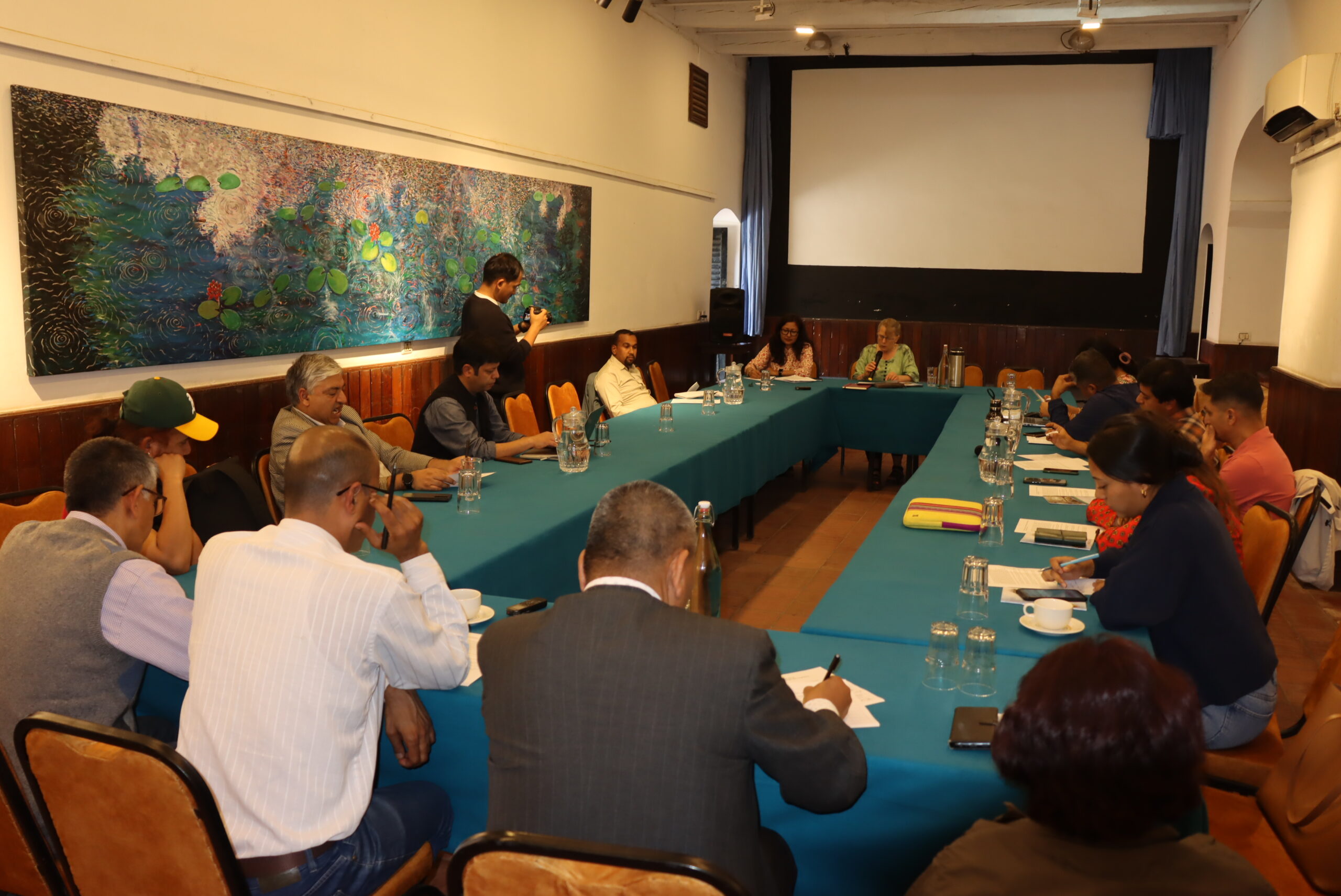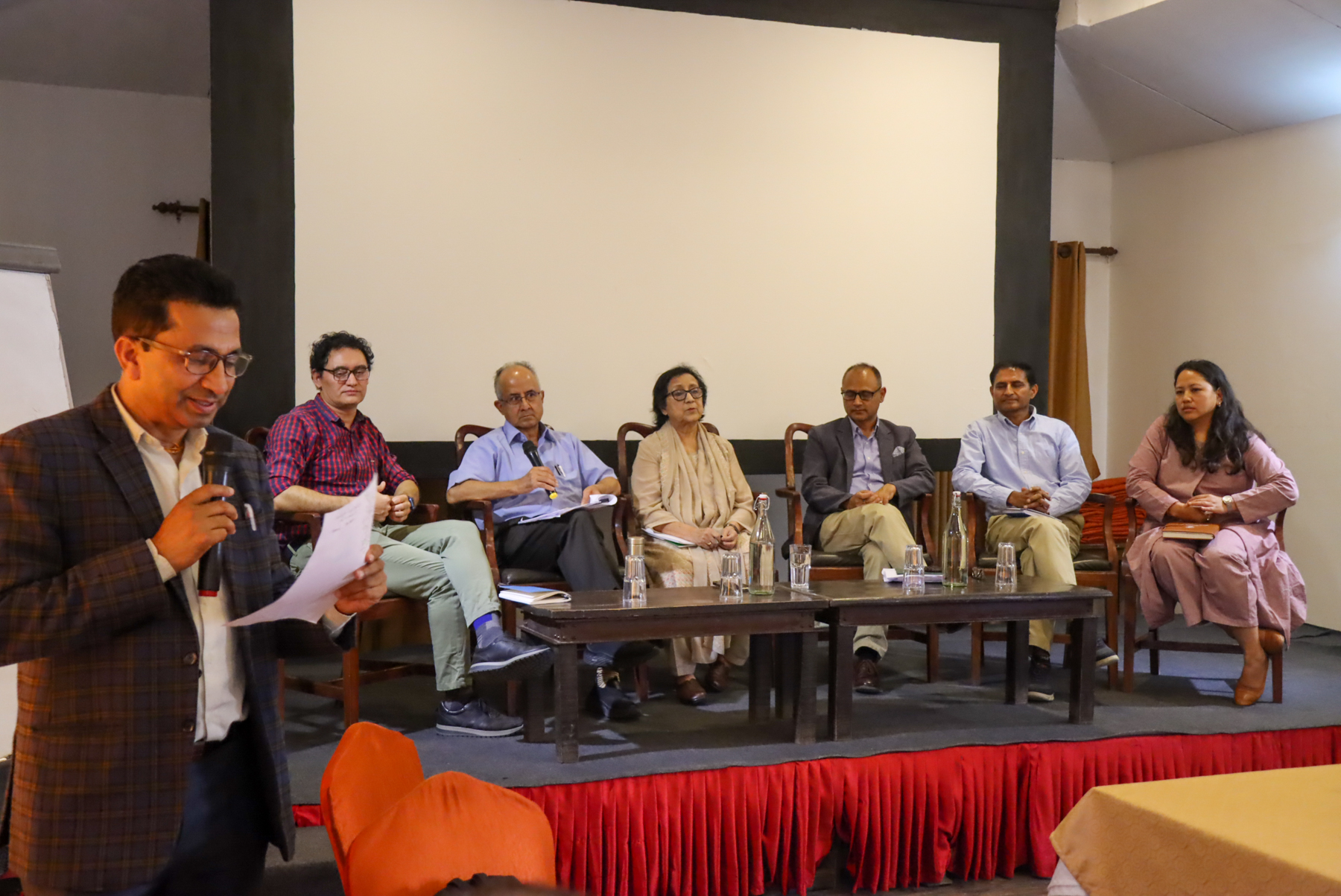
Southasia Institute of Advanced Studies (SIAS) in collaboration with the University of Edinburgh (UoE), UK Research and Innovation (UKRI), and Global Challenge Research Fund (GCRF), under the project “Tomorrow’s Cities”, organized a two-day workshop entitled ”Visioning Tomorrow’s Khokana” on December 29-30, 2021 at Hotel Himalayan Horizon, Dhulikhel, Kavrepalanchwok. The workshop was one of the important components to co-producing the community’s visions to prepare the Land Use Plan (LUP) of the case study site- Khokana. It intended to gather the perceptions of how local communities envisioned Khokana in the next 20 years and then draw out one common vision to be reflected in the LUP later.
A total of 36 participants including 27 from Khokana which included the members of Ward Disaster Management Committee (WDMC), ward officials, local stakeholders, farmers, women and the marginalized and the migrants, six researchers, and one technical person from SIAS, and two urban planners from Institute of Engineering (IOE) participated in the workshop.
The workshop commenced with remarks from Dr. Netra P. Timsina, Chairperson, SIAS, who expressed that under the support and facilitation of SIAS, the visioning exercise must be fully prepared and owned by the participants of Khokana. Mr. Rabindra Maharjan, Ward Chair of Lalitpur Metropolitan City or LMC-21 also echoed the same perspective and encouraged the participants to fully participate in Khokana’s vision development.
Dr. Dilli P. Poudel in the technical session presented a comparative scenario between Khokana’s past and present through the lens of agriculture, livelihood, culture, land-use practices, ongoing development activities, and so on. The presentation concluded with an open question to the participants about the future of Khokana.
To familiarise participants with the visioning exercise, Dr. Mani Ram Banjade conducted mind simulation games and Ms. Helen Shova Maharjan (WDMC member) and Dr. Timsina led a role play. Before the start of the exercise, the participants were divided into four groups to receive disaggregated perspectives. The four groups were WDMC, ward, marginalized groups(including females and migrants), and Sano Khokana. Each of the groups was facilitated by an individual researcher from SIAS and IOE and moderated by two other researchers from SIAS.
As the workshop ended, the participants and researchers agreed to form a task force comprising four local representatives from each group and researchers to develop one common vision of Khokana that would be representative of the disaggregated visions of the four groups.
In the concluding remark, Maharjan claimed that this was the first visioning/ planning event of such type that had been held at Khokana. He also stressed that once the LUP is prepared, it will be a strong basis for dialogue with the municipal and federal governments regarding the development projects focused on Khokana.
The ward chair highly acknowledged the participants for their active engagement in preparing the vision of Khokana’s future. He also expressed his gratitude to SIAS researchers for their excellent facilitation and support for making the workshop successful.




